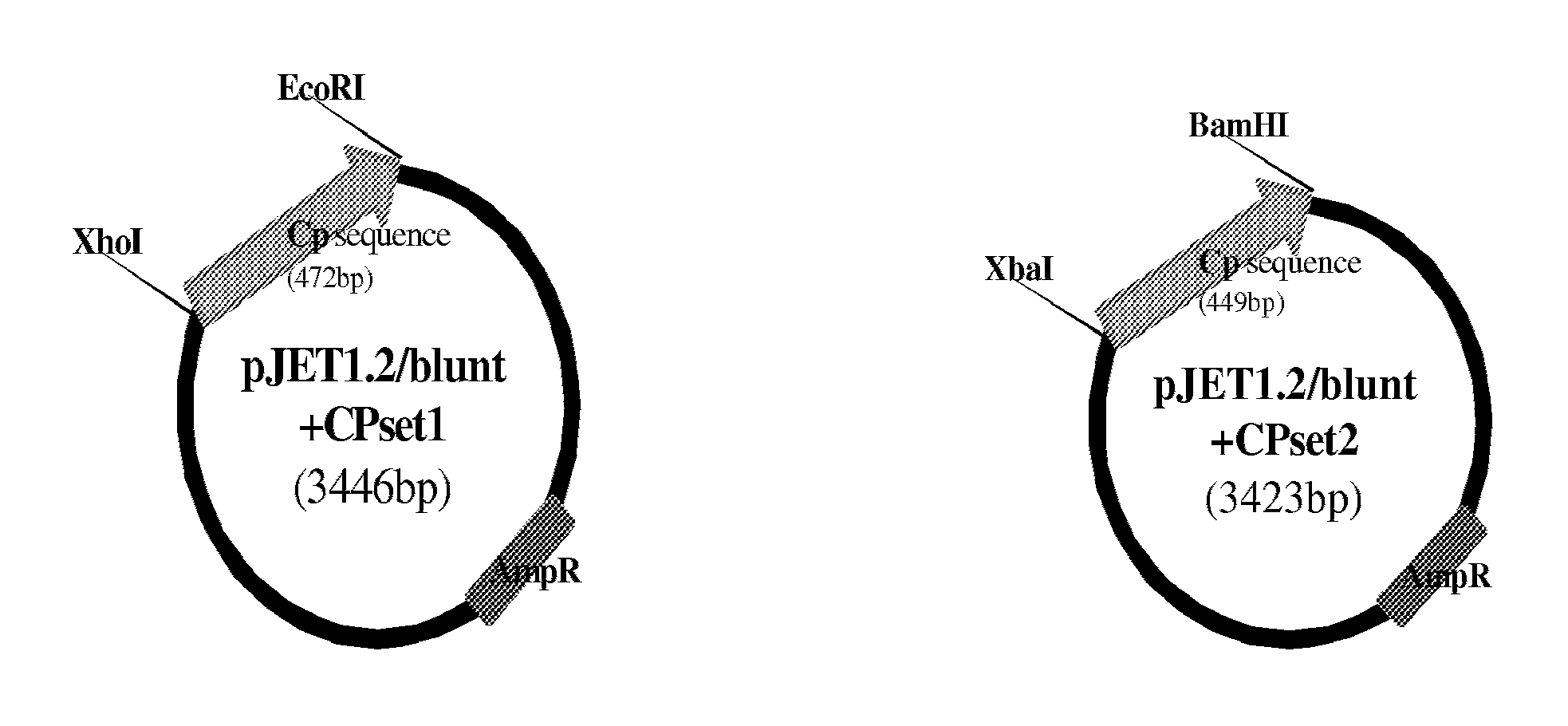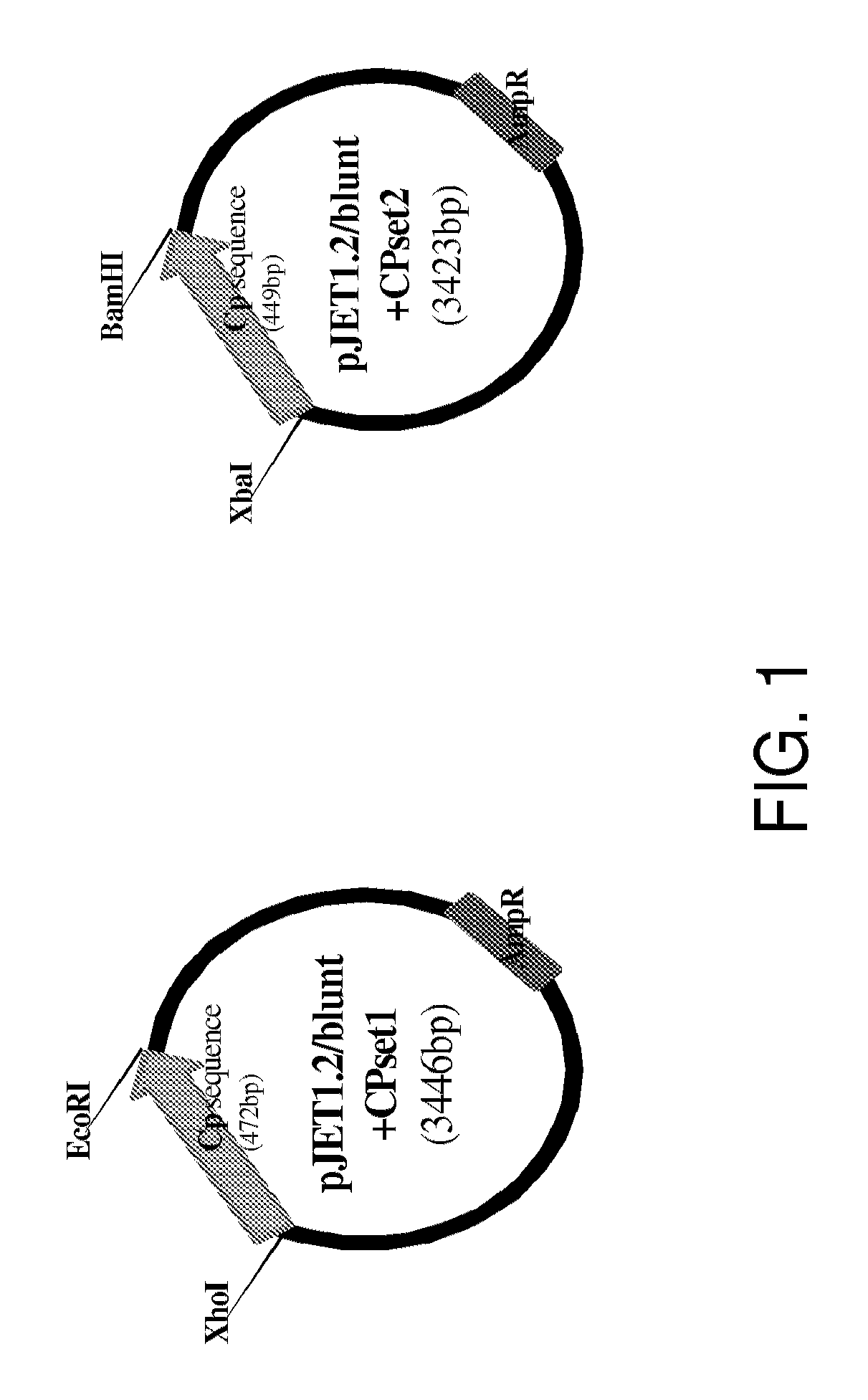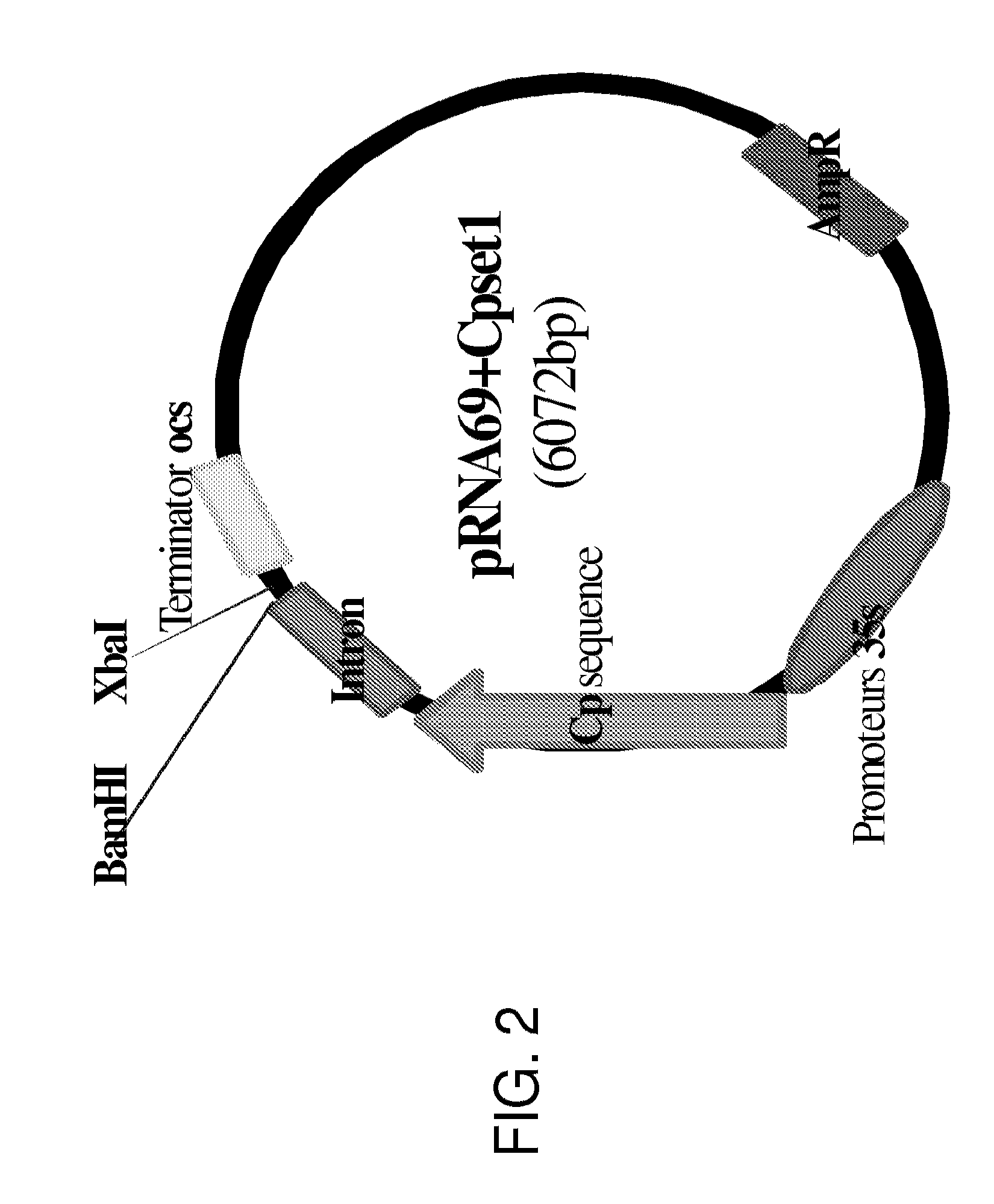Preventing and Curing Beneficial Insect Diseases Via Plant Transcribed Molecules
- Summary
- Abstract
- Description
- Claims
- Application Information
AI Technical Summary
Benefits of technology
Problems solved by technology
Method used
Image
Examples
examples
[0181]Reference is now made to the following examples, which together with the above descriptions illustrate some embodiments of the invention in a non limiting fashion.
[0182]Generally, the nomenclature used herein and the laboratory procedures utilized in the present invention include molecular, biochemical, microbiological and recombinant DNA techniques. Such techniques are thoroughly explained in the literature. See, for example, “Molecular Cloning: A laboratory Manual” Sambrook et al., (1989); “Current Protocols in Molecular Biology” Volumes I-III Ausubel, R. M., ed. (1994); Ausubel et al., “Current Protocols in Molecular Biology”, John Wiley and Sons, Baltimore, Md. (1989); Perbal, “A Practical Guide to Molecular Cloning”, John Wiley & Sons, New York (1988); Watson et al., “Recombinant DNA”, Scientific American Books, New York; Birren et al. (eds) “Genome Analysis: A Laboratory Manual Series”, Vols. 1-4, Cold Spring Harbor Laboratory Press, New York (1998); methodologies as set...
example i
Cloning of IAPV-Specific dsRNA into a Plant Expressible Binary Vector
[0183]dsRNA complementary to the IAPV Coat Protein sequence was found to be effective in reducing viral infection and preventing bee mortality when fed to the bees. The following details preparation of a binary vector capable of producing transgenic plants expressing IAPV specific dsRNA.
[0184]Production and Cloning of IAPV Sequences:
[0185]PCR products representing the 433 bp portion of the IAPV Coat Protein gene (position 8977-9410 in the IAPV genome) (SEQ ID NO: 311552) and it's inverted repeat sequence were prepared using the following primers and pDRIVE plasmid as a template.
[0186]For the IAPV Coat Protein sequence
[0187]1. The forward primer at position 8977 in the IAPV genome, containing XhoI restriction and T7 sequence (“XhoI / T7-CP F”):
5′-GGCTCGAGTAATACGACTCACTATAGGGCGACCAC-3′length = 35 bp, Tm = 73° C.
[0188]2. The reverse primer at position 9410 in the IAPV genome, containing EcoRI restriction sequence (“EcoR...
example ii
Transformation of Plants with Binary Vectors Expressing Plant Pathogen-Specific dsRNA
[0209]Generation of Transgenic Plants
[0210]Plant tissues (for example, cotton, potato, tobacco, rice, tomato, arabidopsis, rapeseed, mustard, etc) are transformed with the Agrobacterium tumefaciens strain (e.g. C58) comprising the vectors encoding plant pathogen-specific dsRNA (e.g. pBART-IR-CP#1 and pBART-IR-CP#2), and regenerated into whole plants via protocols described for example in “Transgenic plants, Methods and Protocols. (2005) Methods in Molecular Biology, Volume 286, edited by Leandro Pena, Humana Press, Totowa N.J.”. Non-limiting, exemplary transformations are detailed below by way of illustration.
[0211]A. Nicotiana tabacum Transformation
[0212]Plant transformation vectors encoding plant pathogen-specific dsRNA (e.g. pBART-IR-CP#1 and pBART-IR-CP#2, optionally with tissue, developmental or other specific promoters or enhancers) are introduced separately into Agrobacterium tumefaciens (for...
PUM
| Property | Measurement | Unit |
|---|---|---|
| Length | aaaaa | aaaaa |
Abstract
Description
Claims
Application Information
 Login to View More
Login to View More - R&D
- Intellectual Property
- Life Sciences
- Materials
- Tech Scout
- Unparalleled Data Quality
- Higher Quality Content
- 60% Fewer Hallucinations
Browse by: Latest US Patents, China's latest patents, Technical Efficacy Thesaurus, Application Domain, Technology Topic, Popular Technical Reports.
© 2025 PatSnap. All rights reserved.Legal|Privacy policy|Modern Slavery Act Transparency Statement|Sitemap|About US| Contact US: help@patsnap.com



